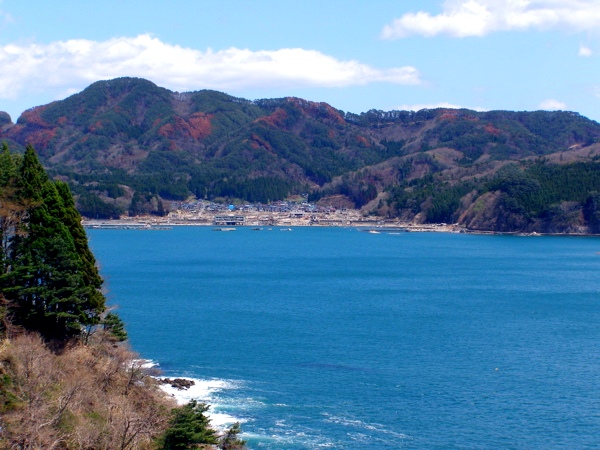
Two Trips To Tohoku05.26.11
I believe I am the first “guest poster” to this blog. Andrea asked if I (Tim) would be willing to write a bit about my experiences in traveling to Tohoku last month. Both trips were a chance to help in whatever small way I could with relief efforts and also to see first hand some of the areas where we as a group of churches are forming partnerships in order to stay involved with relief and rebuilding for the next few months and possibly years. So this is my attempt to jot down a few thoughts arising from those two trips. It has now been over 2 months since the earthquake and tsunamis came – igniting another and very different disaster at the nuclear power plants in Fukushima. A lot has happened and more than a few thoughts have passed through my mind and heart when considering the scope and level of devastation that northern Japan has endured. Where should I even begin?
I often watch NBC news with Brian Williams as a podcast so I am well aware that Japan has long ago disappeared from the main news at least in the US. The fact that it has been replaced with daily news of the awful tornados and now historic flooding of the Mississippi only reminds us of the fact that Japan is not unique this spring in experiencing great pain and loss. Having said that, I do believe that the shear suddenness, vastness, and yes – numbers (20,000 dead and another 10,000 missing??!) puts this particular disaster in Japan on a level which becomes hard to comprehend or describe easily (not that disasters or human suffering ever need to be measured or compared to each other…) I don’t have time for a lot of editing so please accept what follows as my attempts to document a few of the happenings and reflections from these travels. It will no doubt be too long… but that’s the beauty and advantage of blog posts over a sermon, for instance. The reader may simply click ahead to something more interesting. (That was actually a sort of scary thought right now as I consider my sermon for Sunday morning…)
“Tohoku” as it is written in Japanese is made up of the two Chinese characters for East and North – or as we would say in English – northeast. It of course refers to that geographic area making up the northeast portion of the main island of Honshu and also the area which was most affected by the great disaster of March 11.
What can I do to help….?
Before too many days had passed following the earthquake on March 11, this became a question on many peoples’ minds and hearts, if not their lips. When one sees the video images on your TV screen and the sheer horror of what’s going on it is a pretty natural feeling. But it’s not always as simple as it seems. In my own case I was struggling with a bad cold at the time the earthquake hit. In fact, I had just sat through a 2-hour board meeting and was at a doctor’s office trying to get meds to relieve my misery. Days later as I was watching the reports and wondering “What can I do to help?” it made me laugh to realize that in fact, I could hardly get myself to the bathroom… much less up to Tohoku. How many people in northern Japan had been experiencing bad colds that afternoon? …. were in bed and couldn’t run for higher ground?
And there were other issues as well. The trains, highways and telephone (both cell and land line) systems were all down. Gasoline was unavailable and produce quickly disappeared from most stores, causing a sort of buying panic as far away as the Tokyo environs. The nuclear disaster(s) in Fukushima were leading to immediate cut backs of electric power availability and rolling black outs in Tokyo and the neighboring prefectures. Most of coastal Tohoku was of course without any power at all. The Japanese media was heavily discouraging anyone from just “heading north” to help, i.e., with no real plan, route, or means – and the highways were open only to vehicles that had special permission notices supplied by the police department upon approval of an application. Add to all of this the threat of nuclear contamination (both real and unreal varieties) and what we had was an environment with quite a bit of stress. One of those stresses of course was “what can I do to help?”, or “what should I be doing?”
Some have referred to the relief agencies and earnest individuals that arrive on the scene following a natural disaster as “the second disaster”. Motives are often mixed and pressures from donors for that “photo op” and “proof of effectiveness” can sometimes dictate actions more powerfully than the obvious needs of victims right in front of us. Calling relief efforts a “second disaster” might be a bit unkind and of course does not accurately describe all or even most responders. But for any who have experienced some of the confusion of “trying to help” and some of the difficulty involved in being useful rather than just in the way…. the phrase “a second disaster” will often be met with knowing nods.
That is part of the definition of a disaster to begin with – things are seriously broken – and normal methods of “working” or “fixing” are simply not enough. Local governments are often overwhelmed. In times like this it’s sometimes important just to take an initial step… even with the real risk of making mistakes and having efforts fail.
In looking back over these two months it seems clear that God is at work leading individuals and organizations to those divinely appointed connections and relationships – where work that is needed and resources that are available – somehow come together. We pray that our efforts, whatever they are, would fall into this category. It’s true that there are the occasional “disaster stories about relief” but we pray that more and more there will be “relieving stories of how disaster is being overcome”.
Heading north…
Two or three weeks after the earthquake hit God did make clear to us a route by which we could begin to plug in to relief efforts. The story involves many individuals and groups including brothers and sisters in Taiwan, Paula Chen – serving as a missionary from Taiwan and working with one of our congregations (International Bible Fellowship), Covenant missionary Jim Peterson, Dave Husby of Covenant World Relief, leaders of the Japan Covenant Church as well as the “3.11 Iwate Church Network” the group that we have been partnering with in Iwate Prefecture in northern Tohoku. I won’t try to re-tell that story here but please follow these links if you are interested in reading more and seeing more photos: A blog by Jim Peterson which documents with good summary and excellent photos various trips to Tohoku so far. Also, here is a summary page which tells the story of our growing connection with Pastor Kondo and the “3.11 Iwate Church Network” – Relief and Rebuilding in Japan.
On my first trip north I traveled with a team of two other Covenant missionaries, two Japanese pastors, and one Korean pastor who is serving as a missionary from Korea and on staff at one of our Covenant congregations here in Tokyo. On the second trip I accompanied Peter and Ruthie Dutton, who serve as regional coordinators for our mission staff in Asia to some of the same areas. The photos and comments that follow will be a mix of those two trips.
The map above is a bit more detailed than the first map you saw. It shows our route heading north from Sendai (which was a five hour drive north of Tokyo) to the city of Morioka, an additional 2 hour stretch on the highway. This is the largest city in Iwate and is home to two of the congregations that started the relief network called “3.11 Iwate Church Network”. If one travels east over the mountains from Morioka it is about a 2 hour drive to the coastal city of Miyako. Miyako has become the base of operations for much of the relief work that the 3.11 Network is involved in. Both to the north as well as all along the coast to the south are villages, towns and cities that were completely decimated by the tsunami(s). All the names do not show up on this map but you can see the major towns of Kamaishi, Ofunato, Kesennuma and others…. place names that you don’t recognize, but locations which were featured in much of the video footage which you no doubt saw on US news.
The Morioka Bible Baptist Church, led by Pastor Kondo and his wife was our first stop-over destination. It is here that we were able to spend some time with Pastor Kondo as he explained to us the situation in Iwate Prefecture.
Pastor Kondo spent the first month after the earthquake and tsunami making almost daily trips to the Iwate coast from their church in Morioka. This is a 4-hour round trip! In addition the church here became the sort of “dormitory” for multiple volunteer teams from various churches that began to arrive. It’s easy to imagine that while one would be glad to have so many people come to help….it would put an incredible strain on Pastor Kondo and his church to be constantly providing for these volunteer teams. As you can see from the photo he is a young man, but as you talk with him you will quickly become impressed with his depth of thought and careful ways of expressing things. He is very humble and it becomes clear almost immediately that this person is not much interested in taking credit or pushing his own agenda. The “3.11 Iwate Church Network” in fact does not accept any donations in cash at all… according to Pastor Kondo, it just puts too much pressure on the network. Volunteers are readily welcomed and on both of our trips we brought goods and foodstuffs which could be delivered to various evacuation centers.
Pastor Kondo shares one more part of this disaster in a very personal way. He grew up in Fukushima in the shadow of the Dai-ichi Nuclear Power Plant. His father was one of the senior engineers for Tokyo Electric (TEPCO) at the reactors. He came to the Lord through the ministry of the First Baptist Church in his town. Amazingly, his father attended seminary after retirement and is now in his second career, pastoring a congregation to the west of Fukushima, in Tochigi. Due to the nuclear accidents and present condition, Pastor Kondo’s whole home town (Okuma) has had to be evacuated, people have been scattered to locations all around the country. His home church, who had recently completed a new church construction project has been forced to abandon their new building, and no one, including Pastor Kondo, his parents, or anyone else knows when they will be able to return to their homes.
Here, the Kondo family with Peter and Ruthie Dutton.
After saying our farewells to the Kondo family we headed east over the mountains and in a couple hours reached the city of Miyako and the building you see above. This three-story structure has been a simple inn, operated by a gentleman named Mr. Abe and his wife, both probably in their seventies. The first floor was pretty well ruined by the tsunami and Mr. and Mrs. Abe were, in fact, rather miraculously saved from death themselves… somehow surviving the frightening ordeal. When a group of volunteers ended up helping them clean up parts of the first floor a friendship developed and Mr. Abe offered his building to Pastor Kondo and the 3.11 Network as a kind of base camp. It would allow volunteer teams to come directly to the coastal area where the needs were greatest, allow them to camp out (the third floor has been made available for volunteer groups) and take considerable pressure off of the church in Morioka to play host to all of these groups. So the”Nissho-Kan” as the inn is called has been a base camp since the middle of April. On our first trip to Tohoku we arrived here at night and found that including us, there would be 22 volunteers sleeping on the third floor! While power had been restored to the 2nd and 3rd floors we were still without any electricity on the first floor.
It’s not a great photo but here you can see Pastor Kondo sharing some thoughts with the volunteer workers and giving out our instructions for the days work.
One of the tasks of volunteers has been to organize both donated goods as well as purchased food items and then deliver them to areas which are still isolated and unable to get a hold of necessary foodstuffs. Miyako is a fairly large town and while it took a direct hit from the tsunami (almost 400 dead, with 1,400 still missing) there are areas of the city that were untouched and still have stores and businesses operating as usual. However, to the north and south along the coast are many areas where whole towns were wiped out, and no retail stores of any kind remain in business. Other important tasks for volunteers continue to be mucking out houses and buildings, trying to clean away debris and just general clean up. Several of the volunteer teams have also spent regular times each week with children at the evacuation centers… playing with them and trying to relieve some of the trauma and anxiety that so many of them feel.
On the first trip that I was on, my first morning was spent with colleague Jay Haworth, shoring up some of the temporary walls that had been used to enclose the gaps where the large plate glass windows had been. We were able to put in a window (one that we found in the refuse and were able to recycle), build a front door (those large automatic glass doors had also been mangled by the wave), and build several shelves in the downstairs area for organizing donated items and food. No power that day so we did a lot of sawing by hand!
A shot of our team that first went to Miyako. You can see the new door in the background, made up of 2X4’s, plastic sheets, plywood, and any other materials we could get our hands on.
Some of the goods and items that have been donated and purchased. On our second trip we were able to fill the back of our car with several items that Pastor Kondo had asked for: a vacuum cleaner for Mrs. Abe, paper products, adult diapers, 30 kilograms of rice, several large containers with instant food items and soups, as well as individually wrapped candies and goodies to give out to the children. This particular car load of goods was made possible by a donation of the First Baptist Church of Ocean Beach in San Diego, CA – just one of those ways in which you can see God connecting individuals from all around the world (most that have never met each other) to do important things.
Peter and Ruthie Dutton, regional coordinators for Covenant missionary staff in Asia, standing with Mr. Abe at the entrance to the Nissho-Kan.
Gathering for a group photo as we said goodbye to some of the volunteers.
When our days were done in Miyako we began driving home via the coast back towards Sendai. For mile after mile, one passes through towns, villages and clusters of homes that have been washed away or destroyed. Here you can see the railroad tracks that have been completely twisted and pulled up as well as other refuse tossed around by the water. Since most of the damage was from the tsunami, rather than from the original quake tremors, the “boundaries” of the damage are often unusual. Areas that were low-lying or close to the coast were completely ruined, while homes that may have sat higher up on the hills were often in fine condition. The vastness of the destruction can be measured by north and south coordinates (think San Francisco to LA) while the “width” of the disaster (east to west?) was anywhere from a few hundred meters in from the ocean to as many as 4-5 kilometers in from the coast at the wider sections.
Buildings like this were a common site. Steel girders may have stood… but the siding and interiors of buildings were shredded by the power of the wave and the waters, particularly as they return to the sea.
What once were vibrant communities of homes and stores….are now piles of garbage, looking like matchsticks.
The famed Sanriku Coast, known for its beauty, seafood and tourism is really as spectacular as this photo shows. Here, 6 weeks after the earthquake, one gets a very different feel about the ocean. It’s hard to remember the anger of the waves that afternoon of 3.11 and instead you can imagine the generations of people who have lived peacefully along this idyllic shoreline.
Zooming in a bit on the same scene however, reveals the unmistakable destruction of that afternoon 6 weeks ago – a badly broken seawall and a decimated lower half of this village in the distance.
Where would one begin looking for loved ones or valuable possessions in piles like this? The sheer scale of the rubble that was left by the tsunami begins to boggle your mind. While the roads and streets were among the first areas to be cleared away, much of the landscape still looks like this.
The port city of Kesennuma, known as one of the famed tourist areas in northern Miyagi prefecture, experienced terrible loss and was featured in many news videos. The tsunami toppled several giant tanks of fuel right in the dock area. These became ignited and were further carried into the town proper on the tsunami itself, spreading the fire to countless buildings and cars…. a fire that did not burn out for many days.
The photo above, which is not mine, but taken from a news feed, shows Kesennuma in the early days following the earthquake and tsunami. Here you see members of multiple fire fighting teams from as far away as Tokyo who came to help with fire fighting as well as search and rescue operations. Notice the large ship in the background, washed ashore and now many hundreds of meters from the docks.
And here’s the same general area as it looked 6 weeks later when we were there. Large steel I-beams have been quickly welded to the sides of the ship to keep it from toppling.
This is not a small boat. How would one begin to move it back toward the harbor? And this is just one example. There are literally hundreds of these vessels, of all sizes, far from water, some resting on the top of buildings, others crushed and broken. No one yet has a clear estimate of how many cars were ruined, floated out to sea, or simply got crushed in the mayhem. Here’s a short amateur video of how one vessel was recently dealt with in the town of Otsuchi. A tourist boat from the neighboring city of Kamaishi had drifted and ended up on top of a small hotel where it has been perched since the tsunami. I believe this video was shot on May 11th… they used two cranes to lower the ship to the ground, and then the following day they were to begin cutting it apart with torches.
Earthquake, tsunami, fire… it would be easier if you could just “start from scratch” as one person said. But there is a lot of clean up that needs to be done before one can “restart, re-do, or rebuild”. As I watched the news clips this evening of the terrible tornado that came through Joplin, Missouri yesterday, it was hard not to see the resemblance to much of coastal Tohoku. According to Brian Williams of NBC that tornado cut a swath a mile wide and 7 miles long through Joplin, destroying thousands of homes and buildings. The scene as witnessed from a news helicopter in the air was truly frightening. Our hearts go out to the 128 who were reported dead so far and to their families. As mentioned earlier, there’s no need to make comparisons…. but if you take that 7 mile path of destruction and add another 300 miles to it…..and another 30,000 souls lost….. “Lord have mercy!” is our cry for both situations.
I need to wrap this up. I have not even begun to share thoughts on many other topics that are important. Where does the nuclear accident situation stand at present? How has this disaster affected the rest of Japan? How has the Christian Church in Japan responded? What are some changes we see there? How does this all impact our lives and work? Questions for another post…and maybe I will be able to do that in the days and weeks ahead. Thanks for reading this report and thanks to all of you who are continuing to pray for Japan. It is not ALL sorrow and pain. Spring has come to Tohoku. Trees and flowers are blooming. Amidst all the anguish there ARE stories of hope and renewal. And people, whether Japanese or non-Japanese, whether professing Christian or not, are being changed through their attempts to reach out and help those in need. May God continue to take that which is clearly disaster and turn it into something which witnesses powerfully of hope. (report written by Tim Johnson)

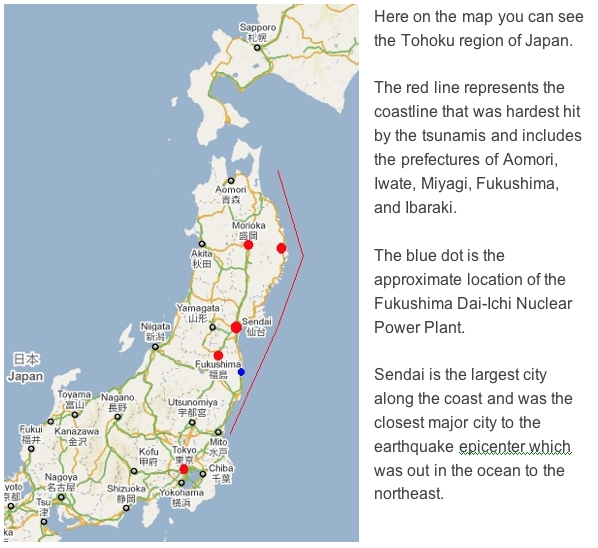
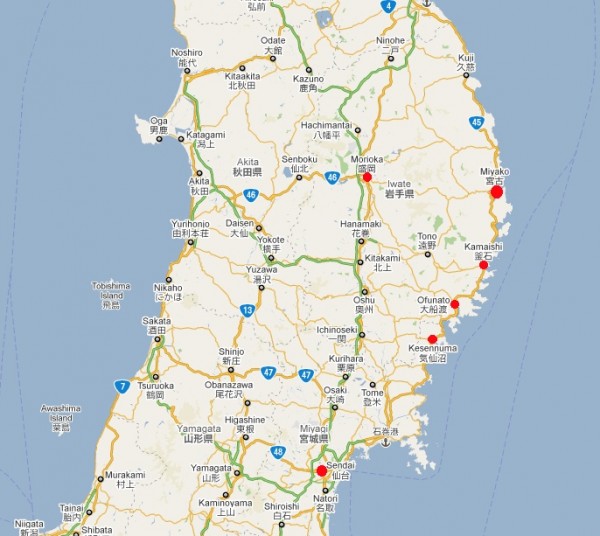
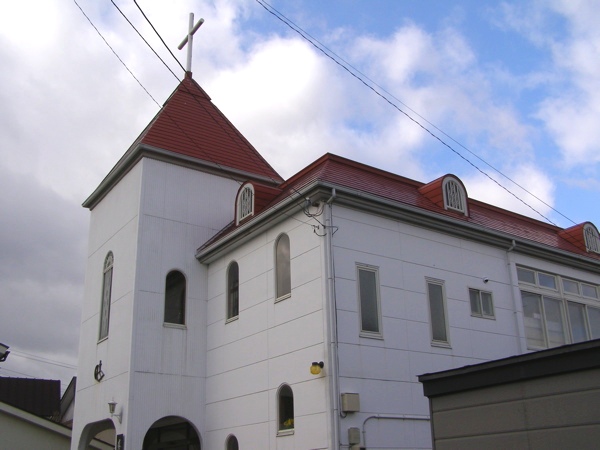
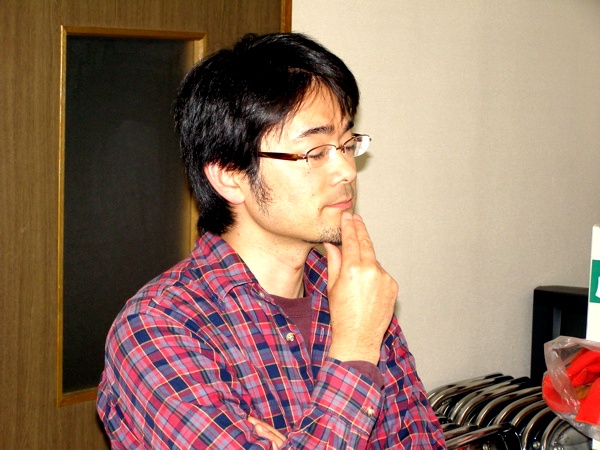
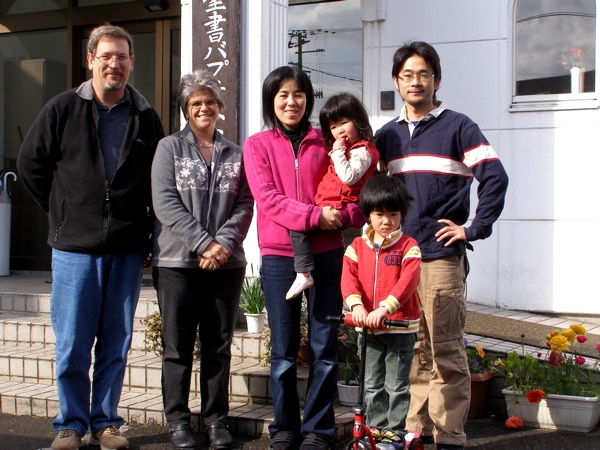
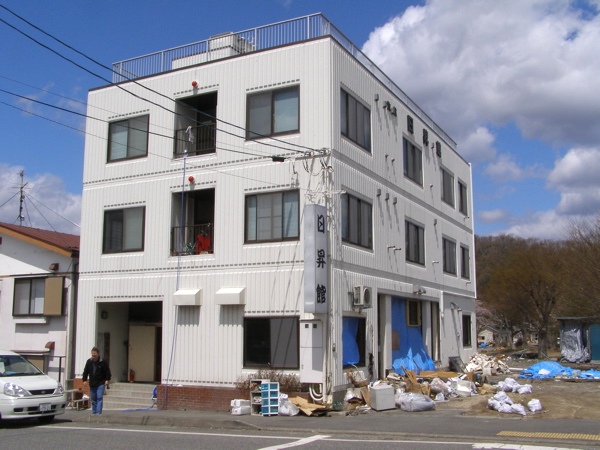
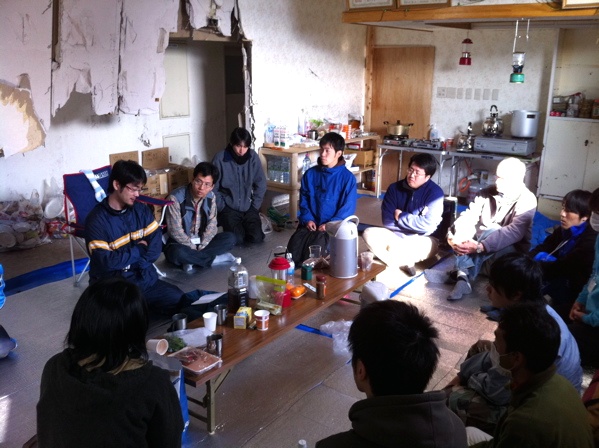
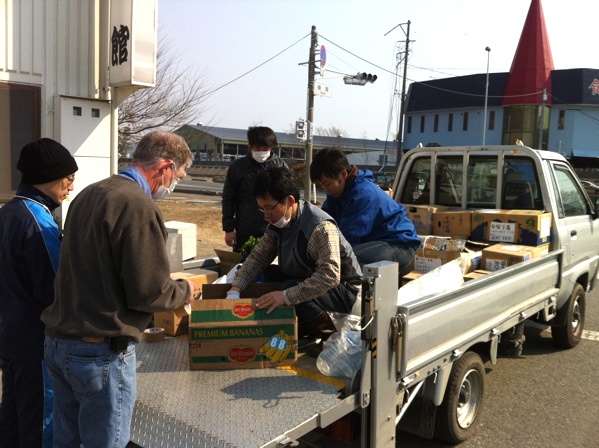
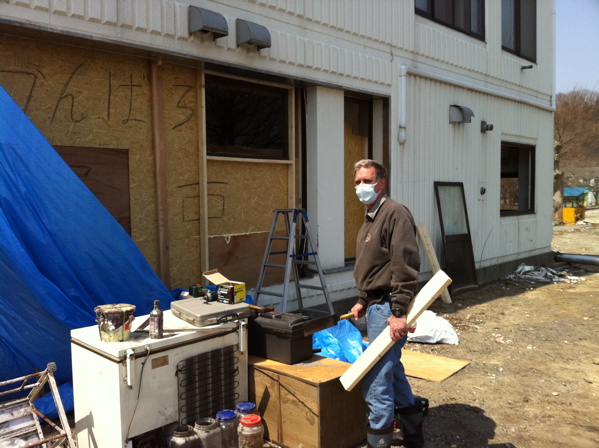
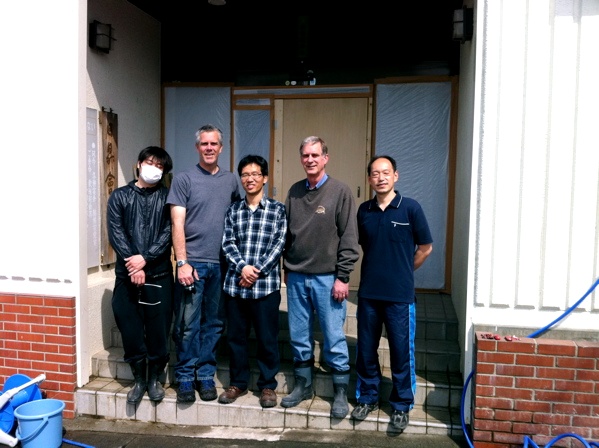
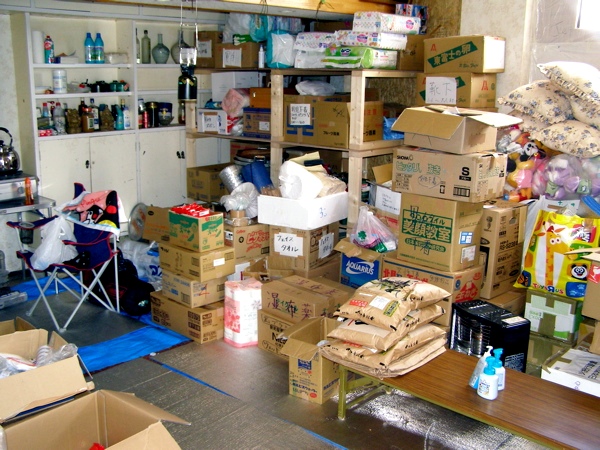
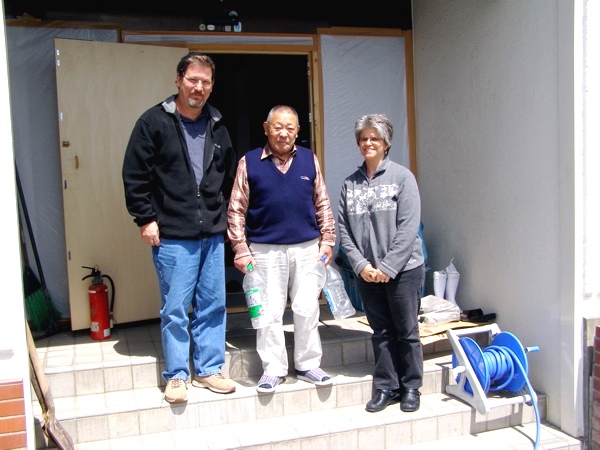
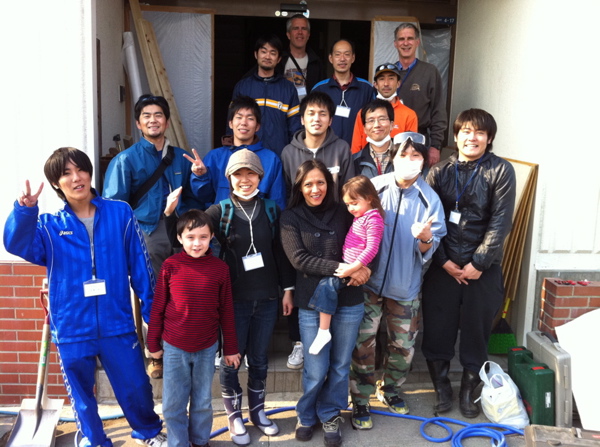
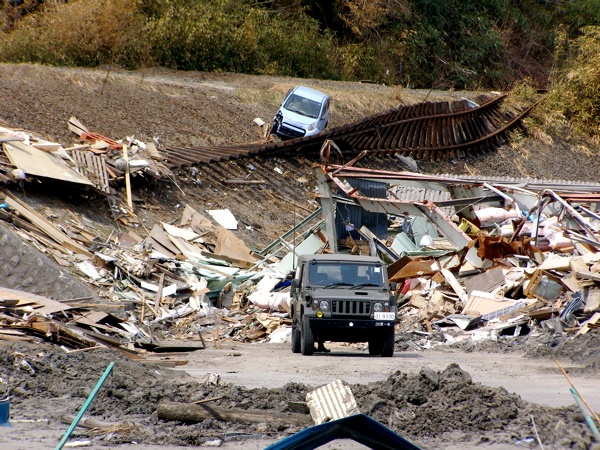
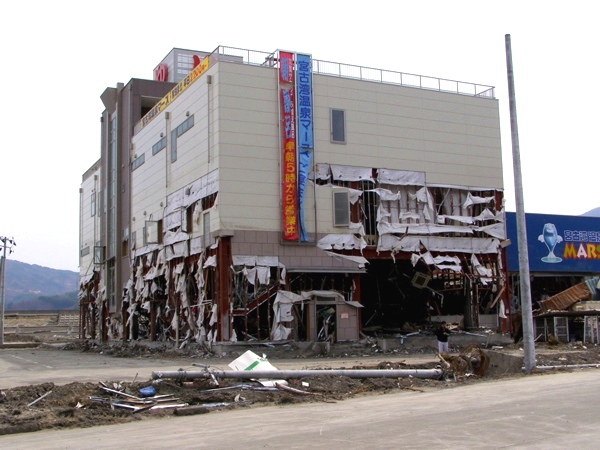
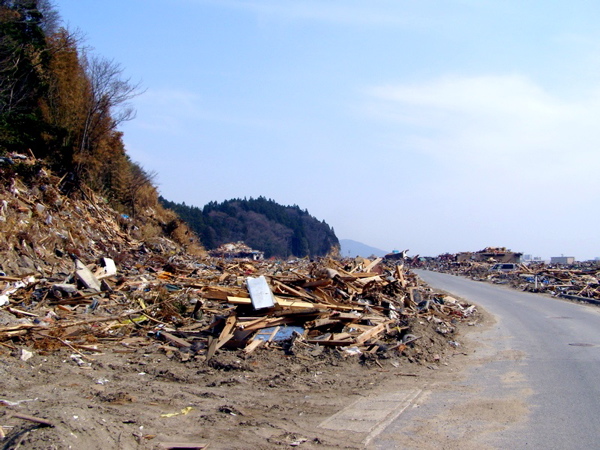

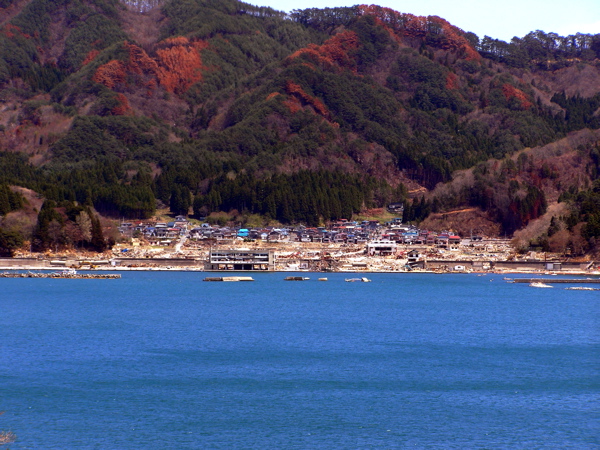
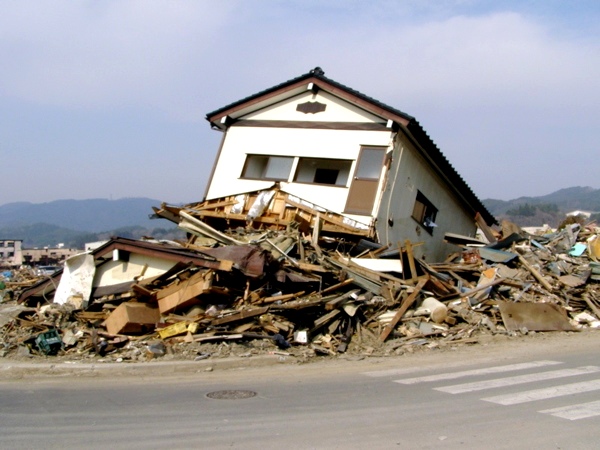
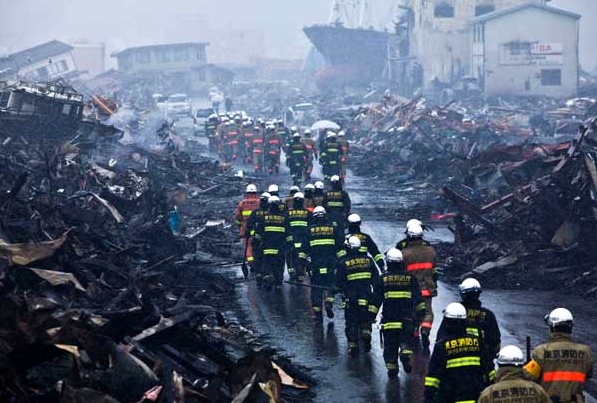
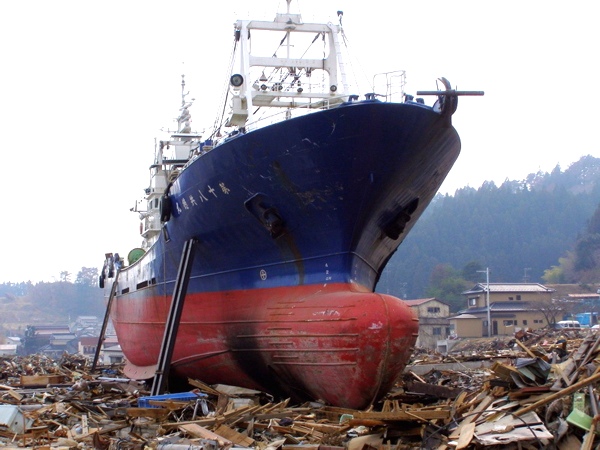
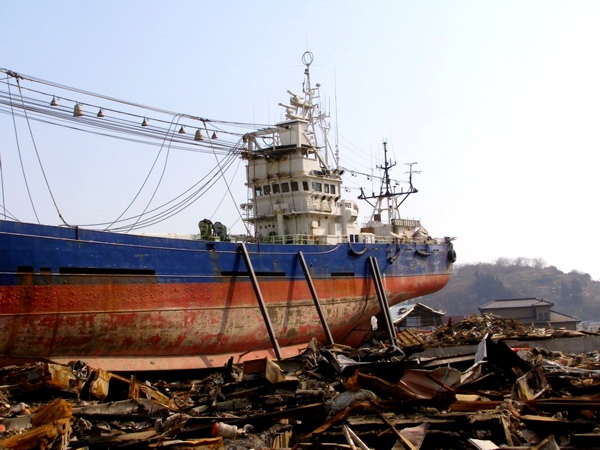
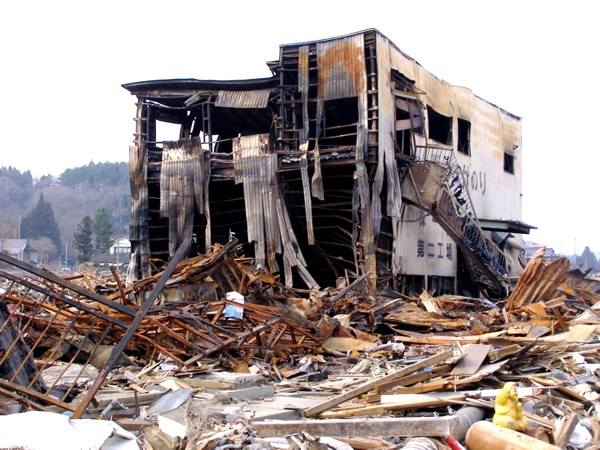



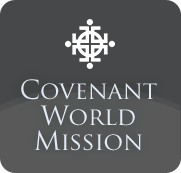
Thanks Tim. Great report!
Report This Comment
Posted by jhpeterson on 12/13/09 May 27th, 2011 at 10:29 AM
Thanks for the monumental report. We will keep praying for you and for Japan. God knows all about it but it helps us to hear from you so we can pray specifically. May the Gospel spread all over Japan as a result of this tragedy.
Report This Comment
Posted by Bobbi on 12/13/09 May 27th, 2011 at 11:40 AM
Thank you Tim for putting this together. It is difficult to accept that the news media has moved on to other events when there is still so much to be done in Japan and so many stories to be to told. Andrea’s blog is the only link I have to any real news of what is happening in the country so close to my heart. And then to see you, Jim, and Jay makes it even more real. I am glad that you took the time to write and give so much detail. It is truly a gift to me, and many others I’m sure, who have lived in Japan and who grieve for a country in mourning. Godspeed.
Report This Comment
Posted by Kim N. on 12/13/09 May 27th, 2011 at 1:44 PM
Thanks Kim for your encouraging words. Do check out Jim’s blog which I have linked in the report and which continues to cover our partnership with 3.11. Thank you for prayers and for “grieving with us” …both are powerful means of changing disaster to hope. Tim
Report This Comment
Posted by Andrea Johnson on 12/13/09 May 27th, 2011 at 6:01 PM
Thanks for sharing and all the connecting links. Even though in the US the news attention has passed on to other topics, we know the situation in Japan still needs our prayers and help. It will be interesting for Dave to see what has happened since his first visit when he comes next month.
Report This Comment
Posted by Ronna on 12/13/09 May 27th, 2011 at 10:29 PM
THANK YOU, TIM!
What an amazing documentary. We had checked and printed Andrea’s daily blogs about the earthquake(s), and appreciated her complete reporting. This report from you brings us up to date and we appreciate your thorough descriptions and pictures. We surely do need to keep Japan’s people in our prayers!
Arleen
Report This Comment
Posted by Arleen Johnson on 12/13/09 May 28th, 2011 at 3:26 AM
A time for birth, a time for death; a time of joy, a time of crying. We do not know the way of the Lord, it is usually hidden from us. We often suffer without a proper reason and we cry out: “Is there God? or,”Is God there?’
Crying, weeping, heart-broken, disppointed and we turn to angry. Even we are angry at the Lord God!
But we know we will see Him, even with my own eyes seeing Him and standing before Him. He is There!
Faith, Hope and Love endures through and in our Lord,crucified and risen!
Report This Comment
Posted by Caleb on 12/13/09 May 28th, 2011 at 11:30 AM
Tim and Andrea, thank you for this detailed report and for your previous honest comments. Since we don’t get news here I read the Mainichi Shimbun when I have time. You two and all of our friends are NOT forgotten. I join so many in prayer that God will pour out grace and mercy on Japan and on each of you. Love, Sherry
Report This Comment
Posted by Sherry Peterson on 12/13/09 May 29th, 2011 at 12:43 PM